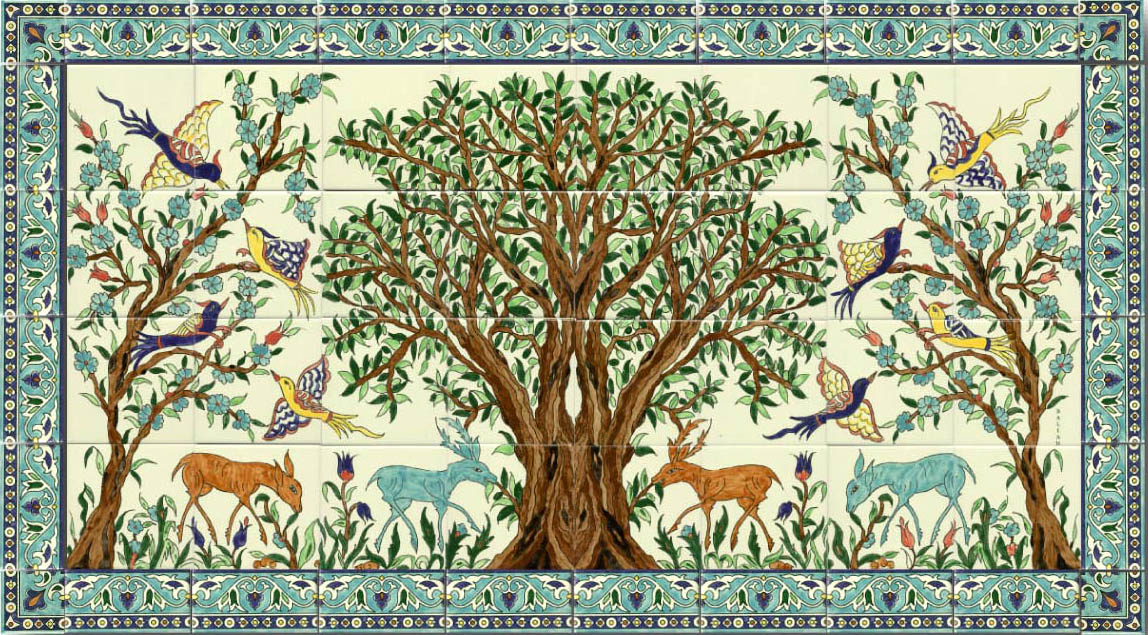Genesis narratives possess me. Jewish tradition has few accounts of spiritual possession; Kabbalistic accounts speak positively of being possessed by divine spirit, and the dybbuk and golem are perhaps the most well known Jewish “ghost” stories (here is a review of a recent study of the history of possession in Judaism). But Creation, Eden, Cain & Abel, Noah, Babel … these stories grip me annually. I reread them, repeat my study of their iconographic histories, imagine art I might (and sometimes do) make, discuss them whenever possible. This year my tikkunknitting journey prompts me to frame my study of Parshat Noach through the lens of the work of hands. I’ve been rowing through the internet (what did we do without the Google Image search function?), my seat belt fastened and oars gripped tightly … to find the image sources, just click on the photos.
Imagining Hands at Work
As a student of early music and music history, I was delighted to find the science of music expressed theoretically in the Guidonian Musical Hand (after Guido d’Arezzo). Musical hands became the principal means by which musical literacy was taught to Catholic church choristers and other music students throughout the medieval period and beyond.



(l to r: Musical treatise by Elias Salomo (1274); Alphabetum Hebraicum; Graecum; Italicum . . ., 1682; CACSA 2001 Program).
The hand has held a similarly important place in Jewish vision.  Like its Christian models, the Hebrew translation of a chant tutor by Judah b. Isaac (14th-15th c) also included a Guidonian hand with notes and syllables written in Hebrew. Hands are featured in a variety of ordinary and extraordinary ways in Jewish ritual and daily life: in the symbol of the hands of the Kohanim in priestly blessing (below left, Jewish tombstone), in Kabbalistic tradition (from the Shefa Tal, 1612; Library of Congress), and the popular folk tradition of the Hamsa (shared with Muslims as the Hand of Mariam, or Miriam; 19th-c Hamsa).
Like its Christian models, the Hebrew translation of a chant tutor by Judah b. Isaac (14th-15th c) also included a Guidonian hand with notes and syllables written in Hebrew. Hands are featured in a variety of ordinary and extraordinary ways in Jewish ritual and daily life: in the symbol of the hands of the Kohanim in priestly blessing (below left, Jewish tombstone), in Kabbalistic tradition (from the Shefa Tal, 1612; Library of Congress), and the popular folk tradition of the Hamsa (shared with Muslims as the Hand of Mariam, or Miriam; 19th-c Hamsa).



Of course, hands abound in the ritual life of Jews, as students and scholars approach the Torah scrolls with yad – in hand. This discipline and respect for the values transmitted by our text provides the motivation for the headers for these tikkun web projects (TikkunKnits, TikkunKnitter and The TikkunTree Project).
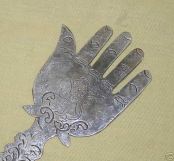

In the spirit of tikkun olam, hands are extended in contemporary efforts to realize peace (rather than just “Imagine” it, as John Lennon did).


The Visual Legacy of Noah’s Handiwork
From Parshah Noach (The Five Books of Moses: A Translation with Commentary, Robert Alter, W.W. Norton & Co., New York, 2004, pp. 41-43):
Genesis 6:13 And God said to Noah: ‘The end of all flesh is come before Me; for the earth is filled with outrage by them, and I am now about to destroy them, with the earth. 14 Make yourself an ark of cypress wood, with cells you shall make the ark, and caulk it inside and out with pitch. […] 22 And this Noah did; as all that God commanded him, so he did.
Genesis 7:1 And the LORD said to Noah, “Come into the ark, you and all your household, for it is you I have seen righteous before Me in this generation. 2 Of every clean animal take you seven pairs, each with its mate [….] 5 And Noah did all that the LORD commanded him.
What did Noah do? He built the ark and gathered family and species into it.
The popularity of this story has been, and remains, extraordinary. Over the years the internet has filled my files of images of illuminated manuscripts with Noah’s reach into the iconographic tradition in illustrated French, Dutch and German Christian bibles from the 13th-15th centuries:









But this week’s study turned up the facsimile of a rare medieval Jewish illuminated manuscript, a North French Hebrew Miscellany (circa 1278), the British Library’s Hebraic treasure. 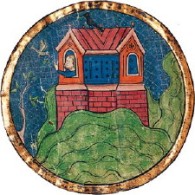 The manuscript is the product of collaboration between Benjamin the Scribe and French Gothic illuminators, likely commissioned by a wealthy Jewish scholar. Here Noah makes a cameo appearance; this ark, imagined as a building resting on a brick wall, is the only Ashkenazi example from this early period in our history. The contents of the volume documents the spiritual needs of its time,
The manuscript is the product of collaboration between Benjamin the Scribe and French Gothic illuminators, likely commissioned by a wealthy Jewish scholar. Here Noah makes a cameo appearance; this ark, imagined as a building resting on a brick wall, is the only Ashkenazi example from this early period in our history. The contents of the volume documents the spiritual needs of its time,  as it is peopled with various heroes and leaders of the tradition, including Moses, Samson, Judith, David, Daniel and Esther, as well as visual memorialization of the Temple. (The desciption of the extraordinary provenance of this manuscript, its travels from one collector’s hands to another’s, is alone worth a visit to the website).
as it is peopled with various heroes and leaders of the tradition, including Moses, Samson, Judith, David, Daniel and Esther, as well as visual memorialization of the Temple. (The desciption of the extraordinary provenance of this manuscript, its travels from one collector’s hands to another’s, is alone worth a visit to the website).
It’s possible to travel quickly from the medieval sublime to the modern ridiculous. The ark has found its way into modern life in a flood of commercial products, as illustrated wood blocks, a box of crayons, pop-up books (here and here),  complicated jigsaw and simple floor puzzles, nesting Matryoshka dolls (such as these: 1, 2, and 3). Models of all sizes circulate, from doll house miniatures to table-top kits. The flood continues on artistic levels, where the ark appears in film (the 1928 Warner Bros.’ Noah‘s
complicated jigsaw and simple floor puzzles, nesting Matryoshka dolls (such as these: 1, 2, and 3). Models of all sizes circulate, from doll house miniatures to table-top kits. The flood continues on artistic levels, where the ark appears in film (the 1928 Warner Bros.’ Noah‘s 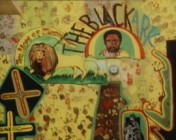 Ark, a war flick full of romance in Paris, intrigue and international shenanigans, starring George O’Brien, Delores Costello, Myrna Loy) , the fictional account of Noe in The Preservationist, by David Maine), and The Black Ark, Noah Howard’s1969 release (now oop, but you can find information about him here and here, and listen to some of his music here).
Ark, a war flick full of romance in Paris, intrigue and international shenanigans, starring George O’Brien, Delores Costello, Myrna Loy) , the fictional account of Noe in The Preservationist, by David Maine), and The Black Ark, Noah Howard’s1969 release (now oop, but you can find information about him here and here, and listen to some of his music here).
Noah’s  ark has reached into every corner of architectural history and kitsch, as British pubs (1, 2), a restaurant/ theme park in St. Charles, Missouri, a “Christian Place” next door to Condom Knowledge adult store in Panama City Beach, Florida, the sunday school of the Episcopal Church of the Resurrection, West Chicago, preschool and daycare in Kansas City College and Bible School theme park ride, and is a Sunday school destination in Burlington, Washington.
ark has reached into every corner of architectural history and kitsch, as British pubs (1, 2), a restaurant/ theme park in St. Charles, Missouri, a “Christian Place” next door to Condom Knowledge adult store in Panama City Beach, Florida, the sunday school of the Episcopal Church of the Resurrection, West Chicago, preschool and daycare in Kansas City College and Bible School theme park ride, and is a Sunday school destination in Burlington, Washington.
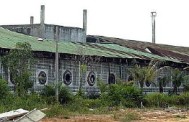 The ark serves as a game lodge in Aberdare National Park, Kenya. The ark is being rebuilt in Frostburg, Maryland. In Malaysia, the ruins of the ark built by the Messianic cult Ajaran Sulaiman or Ajaran Bahtera Noah, that promised its “followers smooth sailing into the hereafter”, is scheduled for demolition.
The ark serves as a game lodge in Aberdare National Park, Kenya. The ark is being rebuilt in Frostburg, Maryland. In Malaysia, the ruins of the ark built by the Messianic cult Ajaran Sulaiman or Ajaran Bahtera Noah, that promised its “followers smooth sailing into the hereafter”, is scheduled for demolition.

The ark survives most creatively in an exhibit at the Skirball Museum in Los Angeles (featured in a recent JudaicaJournal essay).
Reality Check: What Would Noah Do?
As Rabbi Brant Rosen noted a while back (here), while the story of Noah  and the ark is one of most popular bible stories for children, it is actually a very adult cautionary tale about human nature and the spiritual consequences of violence. I wonder how the American Sign Language version of the story expresses the inherent violence within the tale.
and the ark is one of most popular bible stories for children, it is actually a very adult cautionary tale about human nature and the spiritual consequences of violence. I wonder how the American Sign Language version of the story expresses the inherent violence within the tale.
This year my study is drawn to how GreenPeace is telling Noah’s story of human violence to the environment. To dramatize the challenges of global warming and climate change, GreenPeace has built an ark on Mount Ararat in Turkey.

We are in front of a second universal flood. But it is not yet too late. If all the nations of the World make a turn in favour of environment one will be able to avoid the catastrophe “, indicated Andree Böhling, Greenpeace expert in energy.” “The politicians must assume their responsibilities and cannot continue to look at a world threatened to be submerged by the tides, the storms and floods, while hundreds of thousands people lose their houses, which plants and animals disappear by the diseases and the drynesses”, it said. (source)
The GreenPeace project strikes deeply, beyond its surface resemblance to  our
our  family’s sukkah and its evolution. I am reminded of what Noah did rather than what he did not do (which is typically the focus of “the rabbis'” attention, which looks to how Noah’s virtues are qualified, that he was “blameless in his age“, how he measures up against Abraham, etc). Noah did act on divine inspiration, he did build for the future, he did preserve natural life as he knew it, and he did look to signs of peace, the olive tree and the dove, to register human peace with nature and the divine.
family’s sukkah and its evolution. I am reminded of what Noah did rather than what he did not do (which is typically the focus of “the rabbis'” attention, which looks to how Noah’s virtues are qualified, that he was “blameless in his age“, how he measures up against Abraham, etc). Noah did act on divine inspiration, he did build for the future, he did preserve natural life as he knew it, and he did look to signs of peace, the olive tree and the dove, to register human peace with nature and the divine.
So this year, after indulging my passion for iconography and biblical trivia, I’ll ask, “What would Noah do?” Build for human survival, seek the preservation of all species of life, take care to ensure that environmental dangers are avoided and overcome, and be thankful for coming out on the other side. This GreenPeace project really is worth a look (try here, here, or here).
According to the narrative, the earth endured the divine deluge more than 150 days. Here ends my Noahide flood, after approximately 1,450 words and (far too) many images. Time to dry off.
On a personal note: by 9:40 a.m this morning, these tikkunblogs achieved their own Ararat-like landings … TikkunKnits tallied 1000+ visits, TikkunKnitter’s Miscellaney tallied over 500 visits, and The TikkunTree Project registered 100+ visits. Thank you for your interest!
Oct 12th 2007: A few more thoughts …
While American Jews are usually proccupied with the violence of armed conflict in Israel, we seldom consider the circumstances of Jewish violence against the land. Reports of environmental degradation in Israel in general, and of its precious sources of water in particular, are profoundly disturbing. Nir Hasson’s recent report in Haaretz about the Israeli’ government’s proposals to stem the disastrous misuse of the Dead Sea is only one example (report here). Others by Zafrir Rinat document the environmental challenges created by under-regulated mining in Israel (report here), and the virus-like spread of invasive, non-native species of trees, like the blue Australian acacia, introduced into Israel in the early decades of the 20th century to help dry up swamps, create forests and stabilize sand dunes) (report here).
As in Noah’s story, the connection between inter-dependence of human and environmental security and peace is clarified by the decision of the Nobel Committee to award the 2007 Nobel Peace Prize to Al Gore and the UN’s IPCC (Intergovernmental Panel on Climate Change).
Oct 24th 2007
Anyone interested in finding additional information about Israeli efforts to preserve scarce environmental resources and create sustainable environmental practices might check the NIF’s Green Environment Fund.
Read Full Post »
 Is it conceivable that a majority of Americans are content with more of the same? More environmental degradation, continued dependence on oil, continued energy insecurity, inching ever closer to climatological catastrophe? More Republican perks for oil and coal interests?
Is it conceivable that a majority of Americans are content with more of the same? More environmental degradation, continued dependence on oil, continued energy insecurity, inching ever closer to climatological catastrophe? More Republican perks for oil and coal interests?





















 as it is peopled with various heroes and leaders of the tradition, including Moses, Samson, Judith, David, Daniel and Esther, as well as visual memorialization of the Temple. (The desciption of the extraordinary provenance of this manuscript, its travels from one collector’s hands to another’s, is alone worth a visit to the
as it is peopled with various heroes and leaders of the tradition, including Moses, Samson, Judith, David, Daniel and Esther, as well as visual memorialization of the Temple. (The desciption of the extraordinary provenance of this manuscript, its travels from one collector’s hands to another’s, is alone worth a visit to the 
 Ark
Ark ark has reached into every corner of architectural history and kitsch, as British pubs (
ark has reached into every corner of architectural history and kitsch, as British pubs (

 and the ark is one of most popular bible stories for children, it is actually a very adult cautionary tale about human nature and the spiritual consequences of violence. I wonder how the
and the ark is one of most popular bible stories for children, it is actually a very adult cautionary tale about human nature and the spiritual consequences of violence. I wonder how the 
 our
our 

 We scrambled to find enough plastic bags to slice and knot into yarn, and experimented with the “inside out” knitting technique I’ve extended from the double knit bears to the fruits and vegetables. There was also a chance to show one of the youngest visitors to the event how to fingerknit – it’s always a treat to introduce little ones to handcrafts. You can read more about Sunday’s Knit Out
We scrambled to find enough plastic bags to slice and knot into yarn, and experimented with the “inside out” knitting technique I’ve extended from the double knit bears to the fruits and vegetables. There was also a chance to show one of the youngest visitors to the event how to fingerknit – it’s always a treat to introduce little ones to handcrafts. You can read more about Sunday’s Knit Out 
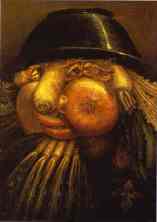

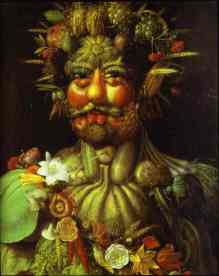


 fruits and vegetables covered the sukkahs I recall from the synagogues of my childhood in the 1960’s, and they are still readily available (though the price is somewhat dear). But plastic presents its own challenges. I am reminded of Rabbi Marc Rosenstein’s June essay in his
fruits and vegetables covered the sukkahs I recall from the synagogues of my childhood in the 1960’s, and they are still readily available (though the price is somewhat dear). But plastic presents its own challenges. I am reminded of Rabbi Marc Rosenstein’s June essay in his 






